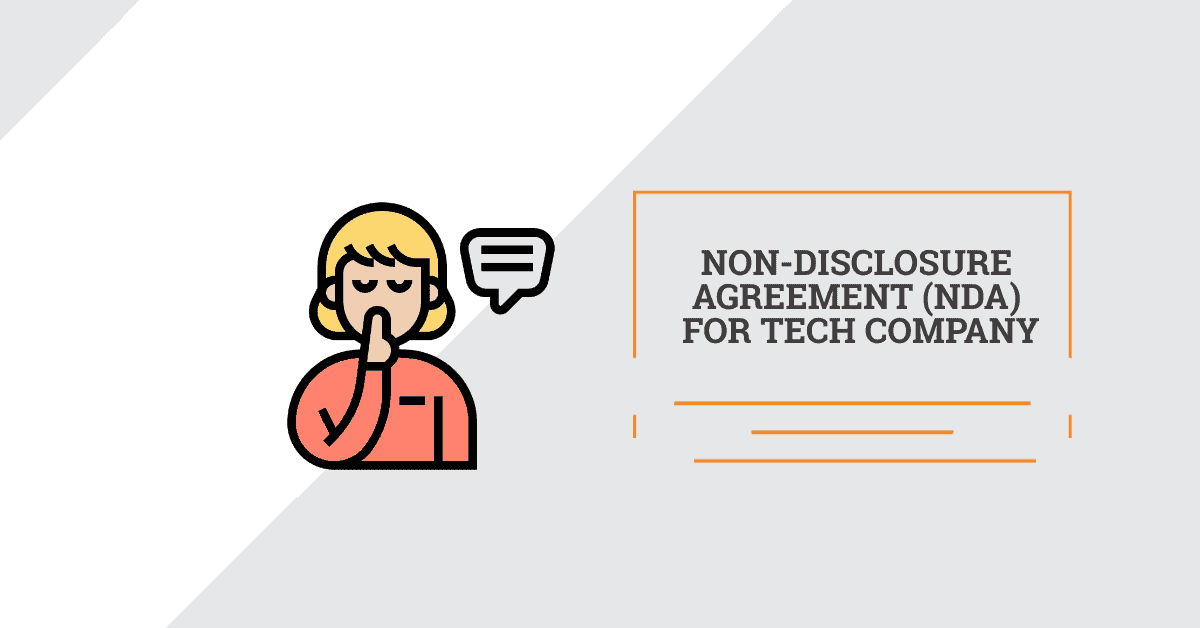
Non-disclosure agreement (NDA) for tech company
There exists the need to protect the confidential information and trade secrets at any commercial relations, but it is particularly important for technology company.
The best way to keep something confidential is not to disclose it in ahead of time. Don’t disclose information until the Recipient has signed and returned the NDA to you.
Non-disclosure agreement with developer allows the Customer to protect trade secrets.
Often the developer has an access to the trade secrets and confidential information of the customer, its subsidiaries, affiliates and related persons or customer clients during the performance of its duties under the agreement.
Naturally the customer is willing to protect its interests regarding prevention of the unlawful disclosure of its trade secrets and confidential information that could harm the customer and related persons.
It is called as a «one-way NDA».
Also, the parties may disclose some important information to each other. In this case they need a «two-way NDA».
A multilateral NDA involves three or more parties and it is used more rarely.
The parties are usually referred to as “Recipient” and “Discloser”.
So, what is NDA general subject matter?
You should decide what your NDA covers.
Usually Discloser agrees to disclose, and Recipient agrees to receive, subject to the certain terms and conditions establishing the restricted access regime, the information that is either received from or which Recipient have obtained access to from Discloser. Or the parties may agree that Confidential is only information which is recorded in some form and marked ‘confidential’.
Anyway, the parties should agree about scope of Confidential Information.

Confidential information may include any financial, commercial, technological and other information in any form that Recipient may directly or indirectly be granted or obtain access to from the Discloser. Different NDA contains different levels of detail a Confidential Information.
NDA can protect any type of information that is not generally known.
* Non-disclosure agreement often contains clauses one or more provisions that if Recipient lawfully obtained the information through other sources they would not be obligated to keep the information secret.
Example: «Confidential information does not include information that:
- is publicly available at the time of transfer to the Recipient by the Discloser;
- was in the Recipient’s possession free of any obligation of confidence at the time it was disclosed to the Recipient or its Representatives;
- becomes publicly available with no fault of the Recipient after the Discloser transfers such information to the Recipient;
- was independently developed or created by the employees and/or independent contractors of the Recipient who had had no access to the Discloser’s Confidential information. »
Often NDA is binding upon the Recipient’s successors, heirs, and assigns, authorized agents, executors, administrators, legal representatives, employees, including those engaged under out staffing agreements, and independent contractors.
Often the disclosing of information has a limited purpose. You can write about.
Example: «Limited Purpose. The CONFIDENTIAL INFORMATION shall be used by the Recipient solely for the purpose of developing discloser`s services and products. »
How long the confidentiality should last?
It’s common to see it limited to 3 or 5 years. But it is also in depend of subject to the jurisdiction of agreement.
Discloser should choose a reasonable period of time for protection transferable type of information.
After that time Recipient will be able to use and disclose information.
Obligations
Return and Destruction. Usually Discloser may require Recipient and it affiliated persons to destroy the Confidential Information, all copies thereof, and discontinue the use of the Confidential Information, in whole or in part.
Security of the Confidential Information. Always agreed, that Recipient shall ensure the security of the Confidential Information. Discloser shall be notified of any disclosures (or attempts to gain access to) of the Confidential Information regardless the nature and reason behind such disclosure.
No Use. The Recipient understands and agrees that it is not allowed to sell, license or otherwise exploit any parts, products, services documents or information that embody in whole
Other obligations should flow from goals of parties and circumstances of cooperation.
Liability for Disclosure
Often for any disclosure of the Confidential Information regardless the reason behind the disclosure, Recipient shall compensate for all losses (direct and indirect) that have arisen and/or may arise as a result of such violation.
Penalties (it’s called Liquidated Damages as well) also may be used and sometimes demanding Recipient to pay penalties is much easier that prove the amount of damages (losses).
We recommend to use all available remedies.
Example: “Notwithstanding the right to liquidated damages, the Discloser has the right to take any measures available and to claim and receive a higher amount of compensation if the Discloser can prove that the actual damage sustained will exceed the amount of liquidated damages.”
Check any NDA which another party asks to sign. It is important to be sure it doesn’t unfairly restrict your future activities.
Anyway, we advise you to get independent advice before acting on any matters that may involve the issue of confidentiality.

